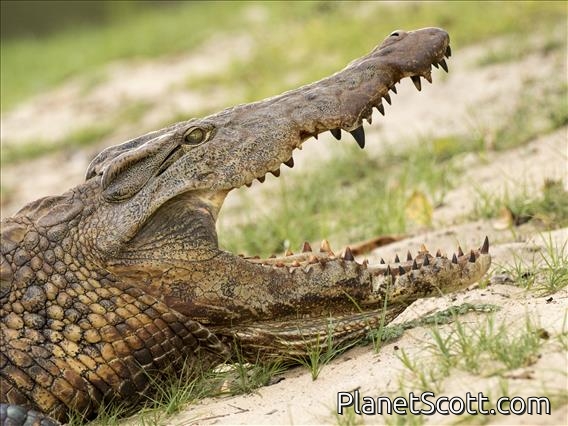Nile Crocodile (Crocodylus niloticus)

Nile Crocodile (Crocodylus niloticus)

Nile Crocodile (Crocodylus niloticus)

Nile Crocodile (Crocodylus niloticus)



×




Nile Crocodile (Crocodylus niloticus)

Nile Crocodile (Crocodylus niloticus)

Nile Crocodile (Crocodylus niloticus)
About Nile Crocodile (Crocodylus niloticus)
- Kingdom: Animals
- Phylum: Chordates
- Class: Reptiles
- Order: Alligators and Crocodiles
- Family: Crocodiles
The Nile crocodile is a large crocodilian native to freshwater habitats in Africa, where it is present in 26 countries. It is widely distributed in sub-Saharan Africa, occurring mostly in the eastern, southern, and central regions of the continent, and lives in different types of aquatic environments such as lakes, rivers, swamps and marshlands. It occasionally inhabits deltas, brackish lakes and rarely also saltwater. Its range once stretched from the Nile Delta throughout the Nile River. Lake Turkana in Kenya has one of the largest undisturbed Nile crocodile populations.
Source: Wikipedia
Trips
Visits
-
-
2001-06-21
-
2001-06-30
South Luangwa National Park, Zambia -
2002-12-02
Chobe National Park - Kasane, BotswanaSupposedly, one had eaten someone at the campground recently. -
2003-03-07
Serengeti, Tanzania -
2011-01-07
Nechisar National Park, Ethiopia -
2011-01-16
Awash National Park, Ethiopia -
2013-10-24
Nairobi National Park, Kenya -
2013-11-02
Central Island National Park, Kenya -
2017-01-02
Lake Mburo National Park, Uganda -
2017-01-08
Queen Elizabeth II National Park, Uganda -
2017-11-20
Ankarafantsika Nature Reserve, Madagascar






